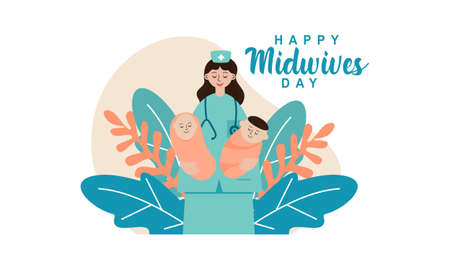1. Introduction to Hanukkah in America
Hanukkah, often called the Festival of Lights, is a cherished Jewish holiday that celebrates the miracle of the oil and the rededication of the Second Temple in Jerusalem. In America, Hanukkah holds a special place not just within Jewish communities, but also as part of the broader mosaic of family traditions across the country. Over time, as Jewish families from diverse backgrounds settled in the United States, Hanukkah has grown to reflect both deep-rooted religious customs and uniquely American influences. Today, you’ll find families lighting menorahs in big cities and small towns alike, mixing age-old rituals with new twists that fit their lifestyles. Whether it’s sharing latkes at a family dinner, spinning dreidels with friends, or exchanging gifts, Hanukkah in America showcases the spirit of togetherness and adaptability that defines so many American family celebrations.
Traditional Hanukkah Customs at Home
When it comes to Hanukkah, American families often gather in their living rooms and kitchens to celebrate with a mix of time-honored traditions and personal twists. While the essence of the holiday is rooted in Jewish history, you’ll find that households across the U.S. adapt these customs to fit their own family routines and local lifestyles.
Lighting the Menorah
The heart of Hanukkah is lighting the menorah—a nine-branched candelabrum. Each night, families add one candle, accompanied by blessings and songs. In many American homes, kids get involved by taking turns placing candles or reciting prayers they’ve learned at Hebrew school or even from YouTube tutorials. Some families use electric menorahs for safety or convenience, especially in homes with small kids or pets.
Saying Prayers and Singing Songs
Prayers are said each night as the candles are lit, sometimes in Hebrew, sometimes in English, or a blend of both. Its not unusual for American families to keep prayer cards handy or use apps on their phones. Afterward, everyone may sing traditional Hanukkah songs—some families love sticking with classics like “Maoz Tzur,” while others might add contemporary Jewish music or even pop songs that have become part of their own tradition.
Spinning the Dreidel
The dreidel game is a must-have at every Hanukkah gathering. Families spin the top and play for chocolate gelt (coins), nuts, or even spare change from dad’s pockets. In diverse American neighborhoods, you’ll see non-Jewish friends joining in, learning the Hebrew letters together, making this game a fun way to share culture.
How Families Adapt Traditions in the U.S.
| Custom | Classic Approach | American Family Adaptations |
|---|---|---|
| Menorah Lighting | Use traditional oil lamps or candles; recite blessings in Hebrew | Electric menorahs for safety; English translations; kids help light; virtual lighting with distant relatives over Zoom |
| Dreidel Game | Play for gelt (chocolate coins) with family members | Include friends from different backgrounds; play for candy or coins; schools host class dreidel tournaments |
| Singing Songs | Sing “Maoz Tzur” and other Hebrew melodies after prayers | Add popular Hanukkah tunes; use karaoke machines; create family playlists on Spotify |
| Saying Prayers | Recite all blessings in Hebrew from memory | Read prayers from printed cards or apps; mix English and Hebrew; encourage kids to lead prayers |
A Personal Note from Dad:
If there’s one thing I’ve noticed raising kids here in the States, it’s how these traditions blend old and new. Whether we’re FaceTiming grandma across the country to join us for candle lighting or letting our youngest pick her favorite song to sing after prayers, every year brings its own special twist. That’s what makes Hanukkah feel so meaningful—no matter where you are or how you celebrate.
![]()
3. Diverse Ways Families Celebrate
One of the things I love most about Hanukkah in America is how families from different backgrounds make the holiday their own. Ashkenazi families, with roots in Eastern Europe, often stick to classic traditions like lighting the menorah, spinning dreidels, and eating latkes (potato pancakes) with applesauce or sour cream. For Sephardic families—whose ancestors come from Spain, North Africa, and the Middle East—Hanukkah might mean homemade sufganiyot (jelly-filled doughnuts) and special dishes like bimuelos or keftes de prasas. Interfaith families, where one parent is Jewish and the other isn’t, often blend Hanukkah with other winter holidays. You might see a menorah right next to a Christmas tree, or families gathering for both Hanukkah candle lighting and Christmas cookie decorating. Multicultural families also add their own flavor—literally! Some incorporate foods and music from both Jewish and non-Jewish heritage, making Hanukkah celebrations unique to their household. Whether it’s singing traditional Hebrew songs, telling stories about family history, or inviting friends from all backgrounds to join the festivities, American families show that there’s no single way to celebrate Hanukkah—it’s all about coming together and sharing light in your own way.
4. Food, Festivities, and Favorite Dishes
One of the best ways to experience Hanukkah in America is through the incredible variety of foods families prepare. While some dishes are universally loved—think crispy latkes (potato pancakes) and sweet jelly donuts (sufganiyot)—the way they’re made and the recipes families use can be as diverse as America itself. Many parents, like me, find themselves searching for Grandma’s handwritten recipe card or experimenting with new twists to fit busy schedules or dietary needs. Some families stick closely to old traditions, while others blend flavors from different cultures, making Hanukkah dinner a real adventure.
Traditional Hanukkah Foods Across American Households
| Classic Dish | Main Ingredients | How It’s Served | Family Twists |
|---|---|---|---|
| Latkes | Potatoes, onions, eggs, flour | With applesauce or sour cream | Sweet potato latkes, gluten-free options, air-fried versions |
| Sufganiyot (Jelly Donuts) | Dough, jam/jelly, powdered sugar | Freshly fried and dusted with sugar | Filled with Nutella, custard, or local jams |
| Brisket | Beef brisket, onions, spices | Sliced hot as a main course | Crock-pot brisket, BBQ-style brisket, vegetarian “brisket” using jackfruit |
| Rugelach | Cream cheese dough, fruit preserves or chocolate filling | Baked and rolled pastries served for dessert or snacks | Chocolate chip, apricot-pistachio, or even peanut butter fillings |
| Dreidel Cookies | Sugar cookie dough, icing | Decorated with blue and white sprinkles or Hanukkah symbols | Dairy-free versions or cookies shaped like menorahs and stars of David |
The Role of Recipes: Passed Down & Remixed
If you ask a group of American Jewish parents about their favorite Hanukkah food memories, you’ll hear stories about secret family ingredients or last-minute trips to the grocery store for that one missing spice. For some families, recipes are treasured heirlooms—passed down over generations and scribbled on index cards in faded ink. Others take a more experimental approach: mixing Sephardic flavors like cinnamon and dates into traditional Ashkenazi latkes or using plant-based ingredients so everyone at the table can enjoy. No matter how it’s done, food brings everyone together—kids learning to grate potatoes alongside grandparents sharing stories from their own childhood Hanukkahs.
5. Community Celebrations and Public Events
When it comes to Hanukkah in America, it’s not just about what happens at home—local communities really come together to celebrate, too. Across the country, synagogues, Jewish community centers, and even some city organizations put on all kinds of special events during the eight nights of Hanukkah. Public menorah lightings are a big deal; you’ll often find families gathering in town squares or parks to watch giant menorahs get lit, sometimes with music and dancing to set the mood. These events are usually open to everyone, whether you’re Jewish or just curious about the holiday, making it a great way for neighbors of all backgrounds to learn and celebrate together. Many places also host Hanukkah concerts featuring traditional songs, local musicians, and performances by kids’ choirs—always a crowd-pleaser for parents like me! And then there’s the spirit of giving back: lots of communities organize charity drives during Hanukkah, collecting food, clothes, or toys for families in need. For many American families, joining these public events is a chance not only to honor their own traditions but also to connect with others and pass down the values of generosity and inclusion that are at the heart of Hanukkah.
6. Blending Hanukkah with American Traditions
One of the most fascinating aspects of celebrating Hanukkah in the United States is how families blend traditional Jewish customs with classic American holiday traditions. Over time, many Jewish-American families have found unique ways to make Hanukkah celebrations fit seamlessly into the broader tapestry of American culture. For example, gift-giving—while not a central part of Hanukkah in other parts of the world—has become a cherished tradition for many American families. Instead of giving gifts all at once, some parents spread out small presents over the eight nights, adding excitement and anticipation much like other December holidays. Large family gatherings are another way Hanukkah has taken on a distinctly American flavor. Families often invite relatives from near and far, turning the celebration into an opportunity to reconnect, share stories, and enjoy festive meals together. Some even combine Hanukkah festivities with other seasonal events, such as attending holiday concerts or participating in community service projects. In many homes, youll find blue and white decorations mixed alongside more typical winter décor, creating a cozy atmosphere that honors both Jewish heritage and American warmth. These blended traditions help families create lasting memories while making Hanukkah uniquely their own—proof that there’s no single “right” way to celebrate when it comes to honoring both faith and family.
7. Passing Down Traditions and Creating New Ones
As a dad, one of the most meaningful parts of Hanukkah is sharing it with my kids—not just lighting the menorah or spinning the dreidel, but really teaching them what it all means. For many American families, especially those living in multicultural communities, passing down Hanukkah traditions is both about honoring heritage and making sure these moments fit into our busy, modern lives. Some families stick to the classic traditions: telling the story of the Maccabees, singing songs like “Maoz Tzur,” and making latkes together from Grandma’s recipe. Others might adapt—maybe you find yourself reading Hanukkah books at bedtime, FaceTiming grandparents for blessings, or even hosting a “Friendsgiving-style” Hanukkah party so everyone feels included. What I’ve seen is that parents want their kids to feel proud of their Jewish identity, but also comfortable being themselves in today’s America. So, we create new traditions too: volunteering as a family during Hanukkah, organizing neighborhood menorah lightings, or adding a favorite family meal to the usual holiday menu. No matter how your family celebrates—traditional, blended, or brand-new—the heart of Hanukkah remains: passing on values of hope, resilience, and togetherness. That’s something every generation can make their own.


